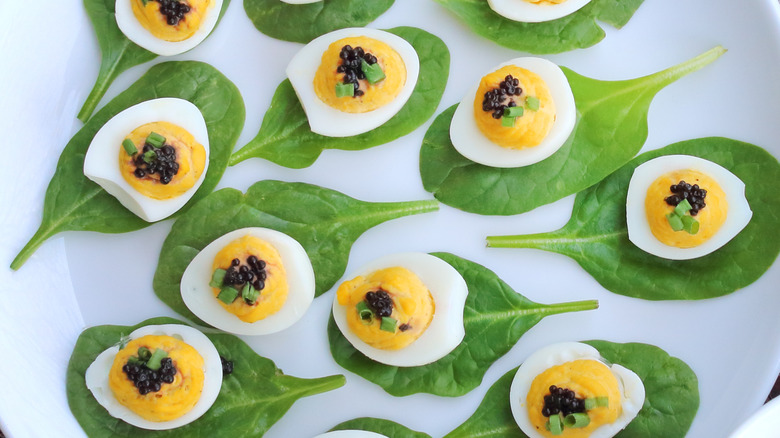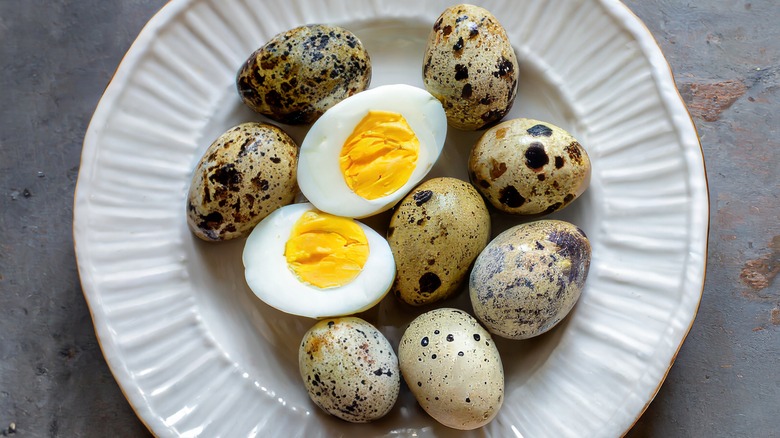Deviled Quail Eggs Are The Ultimate Bite-Size Party Appetizer
Deviled eggs are one of those appetizers that keeps guests coming back for more. At their simplest, they can be made with a medley of mashed egg yolks, mayonnaise, and mustard. Yet, there's also an opportunity to elevate the recipe through creative techniques like frying the egg halves or garnishing with luxurious ingredients like caviar. However, one of the simplest ways to add whimsy to deviled eggs is to swap out chicken eggs for adorably petite and incredibly decadent, quail eggs.
Quail eggs may be a bit more expensive than chicken eggs, but they're worth buying for a gathering for several reasons. Starting with their visual appeal, quail eggs are roughly one-third the size of a chicken egg. It's precisely these miniature dimensions that give them such a wow factor when used to revamp a deviled egg recipe. It also makes them easier to enjoy during a cocktail hour, since they're truly a one-bite wonder. But, that's not all that they have to offer.
Aesthetics and functionality aside, quail eggs even taste better. Although they have a similar flavor to chicken eggs, the much smaller eggs actually boast bigger and bolder flavors. Given that they have relatively large yolks with minimal egg white, this gives them a richer quality. It's that golden yolk that imparts the most decadence and complexity. Savory and buttery, it is wonderfully velvety in texture. Evidently, there's no better egg to be deviled than a quail egg.
What to know when making teeny tiny deviled eggs
Quail eggs can be found at most grocery stores in the refrigerated area next to the chicken eggs. They are also often sold at farmer's markets and specialty food retailers. When picking out a carton, keep an eye out for firm and vibrantly speckled, pale-colored shells, avoiding any with dark rings or cracks. Steer clear of quail eggs with a funky or foul aroma as this indicates the eggs are past their prime.
Hard-boiled quail eggs will be ready after three to four minutes of cooking in boiling water. At which point, they can be tossed into an ice bath, and then peeled. Yet, because quail eggs have a notoriously tough shell, removing this outer layer can be tough. Our advice? Working as slowly and carefully as possible, tap the shell with a knife or roll the egg between your palms to crack and loosen the shell. After peeling, halve and hollow the eggs just as delicately. Due to their fragile nature, you might even want to cook up a few extras.
As for how to craft a creamy filling, our easy deviled eggs recipe is a good starting point. Keep in mind, however, that quantities may need to be adjusted. Once the filling is perfectly smooth and well-seasoned, simply use a piping bag (or plastic bag with a snipped tip) to refill egg halves, and then, garnish. Just like that, these fabulously bite-sized deviled eggs are ready to serve.

